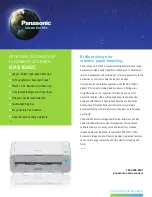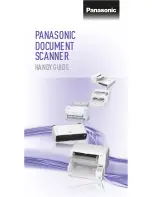
8/17/2015
Easier to Read Pro 94 Scanner Manual
http://marksscanners.com/94/94.shtml
3/21
Display Backlight makes the scanner easier to read in lowlight situations.
Hypersearch lets you set the scanner to search at up to 300 steps per second in frequency bands with 5 kHz steps, compared
to the normal search speed of 100 steps per second.
Key Lock lets you lock the scanner's keys to help prevent accidental changes to the scanner's programming.
Battery Save saves battery power when the scanner does not detect any transmissions for more than 5 seconds while a single
channel is being monitored. Can be turned off.
Battery Low Alert warns you when battery power gets low by beeping about every 10 seconds.
Key Confirmation Tones the scanner sounds a tone when you press a key, perform an operation correctly, and an error tone if
you make an error. Can be turned off.
Memory Backup keeps the frequencies stored in memory for an extended time if the radio loses power.
Your scanner can receive these bands:
Frequency
Range
Step Size
(kHz)
Mode
Band
Frequency
Range
Step Size
(kHz)
Mode
Band
2929.7
5
FM
10Meter Ham Band
406420
12.5
FM
Federal Government
29.750
5
FM
VHF Lo Band
420450
12.5
FM
70cm Ham Band
5054
5
FM
6Meter Ham Band
450470
12.5
FM
UHF Standard Band
108
136.975
12.5
AM
Aircraft Band
470512
12.5
FM
UHF "T" Band
137144
5
FM
Military Land Mobile
806
823.9875
12.5
FM
Public Service "800"
Band
144148
5
FM
2Meter Ham Band
851
868.9875
12.5
FM
Public Service "800"
Band
148174
5
FM
VHF Hi Band
896.1125
956
12.5
FM
UHF Hi, 33cm Ham
Band
216
224.995
5
FM
1.25Meter Ham Band
12401300
12.5
FM
25cm Ham Band
Scanning Terminology
Contents
Scanning the process of stepping through conventional channels in scan banks.
Trunktracking (or Trunking) the process of searching for all active talkgroup IDs in trunked systems, in scan banks.
Trunkscanning the process of stepping through programmed talkgroup IDs in ID lists, in trunked systems, in scan banks.
Searching the process of searching for active frequencies in preprogrammed service searches or the limit search.
Manual Mode used for browsing, monitoring, and programming conventional frequencies.
Trunk Mode used for trunking and programming trunking frequencies and functions.
Monitor Mode used for manually stepping through and moving monitor memories.
Remote Mode the mode the radio is in while being controlled by the computer.
Understanding Trunking
Contents
Trunking systems let a large group of 2way radio users (or even different groups of 2way radio users) efficiently use a set of
frequencies. Instead of selecting a specific frequency for a transmission, the user’s radio selects a programmed trunking bank in
the system when that user presses their PTT (push to talk) button. The trunking system automatically transmits the call on the first
available frequency, and also sends (on a different frequency called a Data or Control channel) a code that uniquely identifies that
transmission as a talkgroup ID (or just ID.) So when you are trunktracking a system, you are listening to active IDs transmitting in
the system (each using the first available frequency in the system.) Trunking systems in general allocate and use fewer frequencies
among many different users.
Since the trunking system might send a call and its response on different frequencies, it is difficult to listen to trunked
communications using a conventional scanner. These scanners let you monitor the control channel frequency so you can hear




































